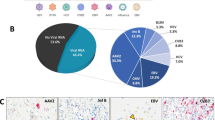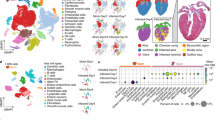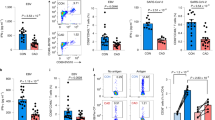Abstract
The cause of sudden infant death syndrome (SIDS) is an unresolved problem of high relevance. Previous studies indicate a role of infections. In our prospective study, we investigated the frequency of virus-induced myocardial affections in SIDS. Postmortem samples from SIDS victims and control subjects were investigated prospectively. Pediatric cases of unnatural death served as controls. Samples were studied for enteroviruses, adenoviruses, parvovirus B19, and Epstein-Barr virus applying PCR. Immunohistochemical investigations for inflammatory cells, the necrosis marker C5b-9(m) complement complex, and the enteroviral capsid protein VP1 were performed. Overall, 62 SIDS victims were studied. As controls, 11 infants were enrolled. Enteroviruses were detected in 14 (22.5%), adenoviruses in 2 (3.2%), Epstein-Barr viruses in 3 (4.8%), and parvovirus B19 in 7 (11.2%) cases of SIDS. Control group samples were completely virus negative. Compared with controls, immunohistochemical investigations partially revealed a significant increase in the number of T lymphocytes in SIDS myocardial samples (p < 0.05). Furthermore, cases with elevated numbers of leukocytes and + necroses, and enteroviral VP1 macrophages, microfocal C5b-9(m) capsid protein within the myocardium were detected. Applying a comprehensive combination of molecular and immunohistochemical techniques, our results demonstrate a clearly higher prevalence of viral myocardial affections in SIDS. Our results emphasize the importance of PCR-based diagnosis of viral myocardial affections. We suggest preliminary criteria for cellular immunohistochemical diagnosis of viral myocardial affections derived from our findings. For future investigations in SIDS, we suggest a comprehensive approach that includes PCR and immunohistochemistry. Our results offer novel strategies for diagnosis of pediatric myocardial viral affections.
Similar content being viewed by others
Log in or create a free account to read this content
Gain free access to this article, as well as selected content from this journal and more on nature.com
or
Abbreviations
- AV:
-
adenovirus
- C5b-9(m):
-
complement complex C5b-9(m)
- CVB3:
-
coxsackievirus B3
- EBV:
-
Epstein-Barr virus
- EV:
-
enterovirus
- HHSV6:
-
human herpes simplex virus type 6
- HPF:
-
high-power field
- PVB19:
-
parvovirus B 19
- RT-PCR:
-
reverse transcriptase–PCR
- SIDS:
-
sudden infant death syndrome
- VP-1:
-
viral protein 1
References
Rasten-Almqvist P, Eksborg S, Rajs J 2002 Myocarditis and sudden infant death syndrome. APMIS 110: 469–480.
Jin O, Sole MJ, Butany JW, Chia WK, McLaughlin PR, Liu P, Liew CC 1990 Detection of enterovirus RNA in myocardial biopsies from patients with myocarditis and cardiomyopathy using gene amplification by polymerase chain reaction. Circulation 82: 8–16.
Lozinski GM, Davis GG, Krous HF, Billman GF, Shimizu H, Burns JC 1994 Adenovirus myocarditis: retrospective diagnosis by gene amplification from formalin-fixed, paraffin-embedded tissues. Hum Pathol 25: 831–834.
Hebert MM, Yu C, Towbin JA, Rogers BB 1995 Fatal Epstein-Barr virus myocarditis in a child with repetitive myocarditis. Pediatr Pathol Lab Med 15: 805–812.
Murry CE, Jerome KR, Reichenbach DD 2001 Fatal parvovirus myocarditis in a 5-year-old girl. Hum Pathol 32: 342–345.
Rambaud C, Cieuta C, Canioni D, Rouzioux C, Lavaud J, Hubert P, Brousse N, Rudler M, Cheron G 1992 Cot death and myocarditis. Cardiol Young 2: 266–271.
Aretz HT 1987 Myocarditis: the Dallas criteria. Hum Pathol 18: 619–624.
Dettmeyer R, Baasner A, Schlamann M, Haag C, Madea B 2002 Coxsackie B3 myocarditis in 4 cases of suspected sudden infant death syndrome: diagnosis by immunohistochemical and molecular-pathologic investigations. Pathol Res Pract 198: 689–696.
Ben-Ezra J, Johnson DA, Rossi J, Cook N, Wu A 1991 Effect of fixation on the amplification of nucleic acids from paraffin-embedded material by the polymerase chain reaction. J Histochem Cytochem 39: 351–354.
Kwok S, Higuchi R 1989 Avoiding false positives with PCR. Nature 339: 237–238.
Li Y, Bourlet T, Andreoletti L, Mosnier JF, Peng T, Yang Y, Archard LC, Pozzetto B, Zhang H 2000 Enteroviral capsid protein VP1 is present in myocardial tissues from some patients with myocarditis or dilated cardiomyopathy. Circulation 101: 231–234.
Linder J, Cassling RS, Rogler WC, Wilson JE, Markin RS, Sears TD, McManus BM 1985 Immunohistochemical characterization of lymphocytes in uninflamed ventricular myocardium. Arch Pathol Lab Med 109: 917–920.
Edwards WD, Holmes DR, Reeder GS 1982 Diagnosis of active lymphocytic myocarditis by endomyocardial biopsy: quantitative criteria for light microscopy. Mayo Clin Proc 57: 419–425.
Dettmeyer R, Schlamann M, Madea B 1999 Immunohistochemical techniques improve the diagnosis of myocarditis in cases of suspected sudden infant death syndrome (SIDS). Forensic Sci Int 105: 83–94.
Shimizu H, Rambaud C, Cheron G, Rouzioux C, Lozinski GM, Rao A, Stanway G, Krous HF, Burns JC 1995 Molecular identification of viruses in sudden infant death associated with myocarditis and pericarditis. Pediatr Infect Dis J 14: 584–588.
Phillips CA, Aronson MD, Tomkow J, Phillips ME 1980 Enteroviruses in Vermont, 1969–1978: an important cause of illness throughout the year. J Infect Dis 141: 162–164.
Mounts AW, Amr S, Jamshidi R, Groves C, Dwyer D, Guarner J, Dawson JE, Oberste MS, Parashar U, Spevak P, Alexander J 2001 A cluster of fulminant myocarditis cases in children, Baltimore, Maryland, 1997. Pediatr Cardiol 22: 34–39.
Bergelson JM, Cunningham JA, Droguett G, Kurt-Jones EA, Krithivas A, Hong JS, Horwitz MS, Crowell RL, Finberg RW 1997 Isolation of a common receptor for Coxsackie B viruses and adenoviruses 2 and 5. Science 275: 1320–1323.
Kandolf R, Klingel K, Zell R, Canu A, Fortmuller U, Hohenadl C, Albrecht M, Reimann BY, Franz WM, Heim A et al. 1993 Molecular mechanisms in the pathogenesis of enteroviral heart disease: acute and persistent infections. Clin Immunol Immunopathol 68: 153–158.
Badorff C, Berkely N, Mehrotra S, Talhouk JW, Rhoads RE, Knowlton KU 2000 Enteroviral protease 2A directly cleaves dystrophin and is inhibited by a dystrophin-based substrate analogue. J Biol Chem 275: 11191–11197.
Dettmeyer R, Kandolf R, Baasner A, Banaschak S, Eis-Hubinger AM, Madea B 2003 Fatal parvovirus B19 myocarditis in an 8-year-old boy. J Forensic Sci 48: 183–186.
Shanes JG, Ghali J, Billingham ME, Ferrans VJ, Fenoglio JJ, Edwards WD, Tsai CC, Saffitz JE, Isner J, Furner S et al. 1987 Interobserver variability in the pathologic interpretation of endomyocardial biopsy results. Circulation 75: 401–405.
Feldman AM, McNamara D 2000 Myocarditis. N Engl J Med 343: 1388–1398.
Cioc AM, Nuovo GJ 2002 Histologic and in situ viral findings in the myocardium in cases of sudden, unexpected death. Mod Pathol 15: 914–922.
Cassling RS, Linder J, Sears TD, Waller BF, Rogler WC, Wilson JE, Kugler JD, Kay DH, Dillon JC, Slack JD, McManus BM 1985 Quantitative evaluation of inflammation in biopsy specimens from idiopathically failing or irritable hearts: experience in 80 pediatric and adult patients. Am Heart J 110: 713–720.
Rotbart HA, Webster AD, Pleconaril Treatment Registry Group 2001 Treatment of potentially life-threatening enterovirus infections with pleconaril. Clin Infect Dis 32: 228–235.
Martin AB, Webber S, Fricker FJ, Jaffe R, Demmler G, Kearney D, Zhang YH, Bodurtha J, Gelb B, Ni J, Bricker T, Towbin JA 1994 Acute myocarditis. Rapid diagnosis by PCR in children. Circulation 90: 330–339.
Klump WM, Bergmann I, Muller BC, Ameis D, Kandolf R 1990 Complete nucleotide sequence of infectious Coxsackievirus B3 cDNA: two initial 5′ uridine residues are regained during plus-strand RNA synthesis. J Virol 64: 1573–1583.
Chang KL, Chen YY, Chen WG, Hayashi K, Bacchi C, Bacchi M, Weiss LM 1999 EBNA-1 gene sequences in Brazilian and American patients with Hodgkin's disease. Blood 94: 244–250.
Cassinotti P, Weitz M, Siegl G 1993 Human parvovirus B19 infections: routine diagnosis by a new nested polymerase chain reaction assay. J Med Virol 40: 228–234.
Acknowledgements
The authors are indebted to U. Cremer and K.H. Schiwy-Bochat for support. We thank H. Langer, C. König, H. Körner, and R. Klemmer for excellent technical assistance.
Author information
Authors and Affiliations
Corresponding author
Additional information
This study was supported by the Deutsche Forschungsgemeinschaft (DE 814).
Rights and permissions
About this article
Cite this article
Dettmeyer, R., Baasner, A., Schlamann, M. et al. Role of Virus-Induced Myocardial Affections in Sudden Infant Death Syndrome: A Prospective Postmortem Study. Pediatr Res 55, 947–952 (2004). https://doi.org/10.1203/01.pdr.0000127022.45831.54
Received:
Accepted:
Issue date:
DOI: https://doi.org/10.1203/01.pdr.0000127022.45831.54
This article is cited by
-
Diagnostic challenges and forensic implications in a case of infantile fatal myocarditis
Forensic Science, Medicine and Pathology (2023)
-
Letale lymphozytäre Myokarditis – eine unterschätzte Diagnose im Säuglings- und Kindesalter?
Die Pathologie (2023)
-
Sudden cardiac death—update
International Journal of Legal Medicine (2021)
-
Postmortale Diagnostik einer (post-)viralen Myokarditis bei mutmaßlichem plötzlichem Säuglingstod
Rechtsmedizin (2016)
-
Immunohistochemical diagnosis of myocarditis on (infantile) autopsy material: Does it improve the diagnosis?
Forensic Science, Medicine, and Pathology (2015)



